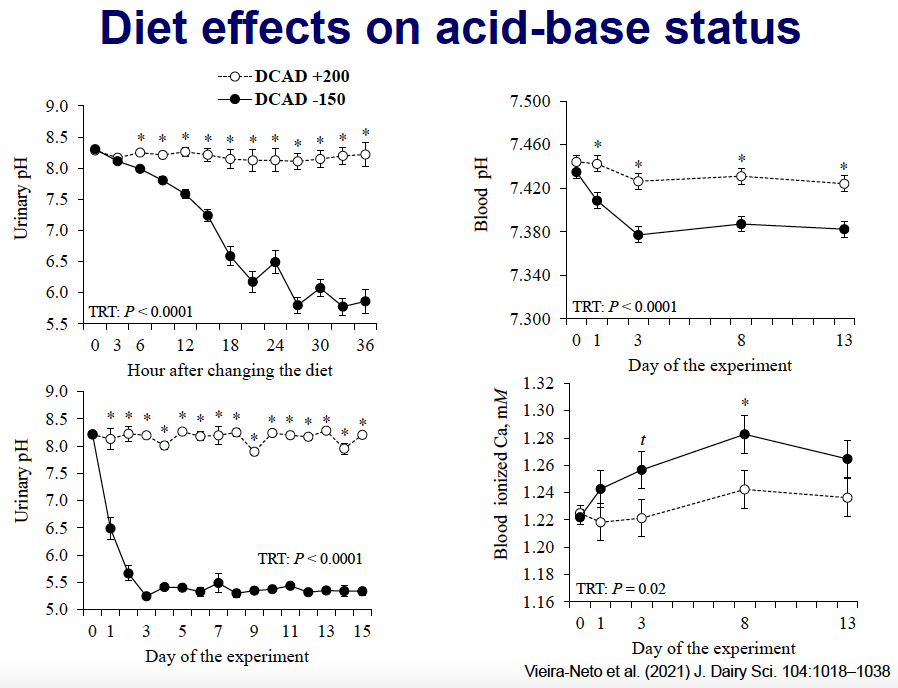
Research Note
Prepartum Window:
Preventing Postpartum Mineral Related Problems
With the onset of lactation, the cow experiences a decrease in blood calcium, which is used to synthesize colostrum and milk. If the Ca loss is only transient — lasting no more than a day or two – then most cows do not suffer any negative consequence. But if it persists, hypocalcemia can result in greater risk of other diseases that impact lactation and reproductive performance.
 Hypocalcemia does not result from inadequate Ca intake. In fact, prepartum diets marginal to deficient in Ca help reduce the risk of the disease. Also, the industry already has decades of research and experience to support feeding acidogenic diets prior to calving in order to reduce the risk of hypocalcemia and improve Ca homeostasis.
Hypocalcemia does not result from inadequate Ca intake. In fact, prepartum diets marginal to deficient in Ca help reduce the risk of the disease. Also, the industry already has decades of research and experience to support feeding acidogenic diets prior to calving in order to reduce the risk of hypocalcemia and improve Ca homeostasis.
Even so, subclinical hypocalcemia remains prevalent, notes Dr. José Santos at the University of Florida, affecting up to 60% of the dairy cows in the first three days postpartum.
So, how can we fine-tune feeding in the “prepartum window” to prevent mineral related problems later?
First, Dr. Santos suggests, recognize that there is “a lot of noise” coming through the window: “For example, as cows age they have less capacity to regulate their mineral metabolism. Also, by the second lactation, they’re producing more colostrum, which requires more blood Ca.”
Formulation for acidogenic diets typically involves adjusting the prepartum dietary cation-anion difference (DCAD). However, Dr. Santos points out, we don’t yet know the optimum DCAD to control hypocalcemia and improve postpartum performance.
Among his recommendations, Dr. Santos advises reducing DCAD to about −100 mEq/kg diet dry matter (DM) by adding chloride salts, keeping dietary sulfur less than 0.40% of diet DM, and maintaining moderate dietary Ca (0.60-0.80% DM). Also, select ingredients with low concentration of potassium and sodium, restrict dietary phosphorus (<0.30% DM), and supplement magnesium (about 0.40% DM).
He points to recent meta-analyses of studies indicating that prepartum acidogenic diets benefit multiparous cows by increasing postpartum dry matter intake (DMI) and yields of milk and fat-corrected milk.
“Despite the potential to increase DMI postpartum,” Dr. Santos cautions, “diet-induced metabolic acidosis can decrease DMI before calving.”
Ultimately, he says, the effects of acidogenic diets on DMI are mediated by the changes in the acid-base status of the cow.
“What we know so far from the available data indicate that prepartum parous cows should be fed acidogenic diets planned for the last 21 days of gestation.”
Dr. Santos offers a detailed list of recommendations in his recent Four State presentation
Questions?
Email FeedInsight 4Dairy


